Mexico › Tijuana
Updated: March 1, 2022
See Also
- Mexico – Where to Go
- Mexico – With Kids
- Mexico – Best Time to Visit
- Mexico – Best Beaches
- Mexico – Cancun vs Tulum vs Playa del Carmen
The godfather of Mexican border towns, Tijuana has been undergoing something of a renaissance in the last ten years. Cutting-edge art galleries, museums, and dynamic culinary and craft beers scenes – in addition to the old-fashioned fun and bars offered on Avenida Revolución – make this one of our favorite cities for a short-break or day-trip south of the US border.
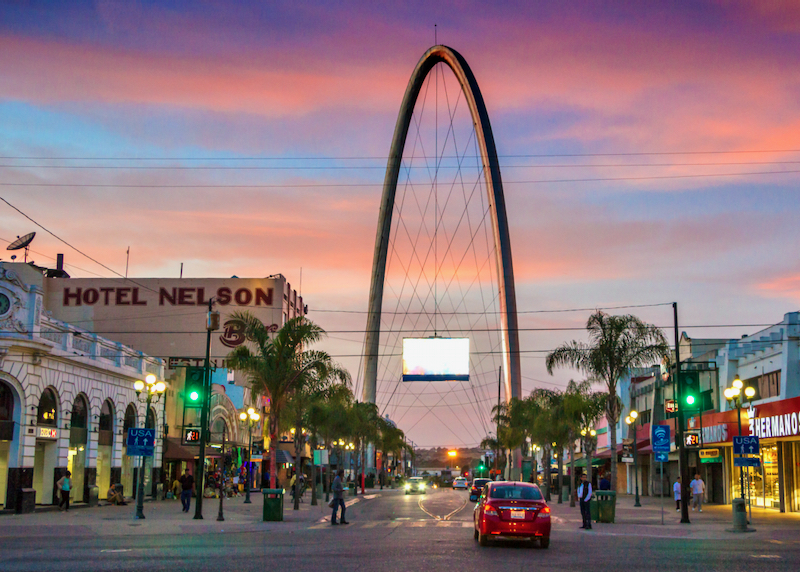
The Millennial Arch on Avenida Revolucion.
Frequently Asked Questions about Tijuana
Where is Tijuana?
Tijuana is the largest city in the Mexican state of Baja California, set on the Pacific Ocean and right on the border with the US state of California. Tijuana is just 20 miles (32 km) south of central San Diego, 105 km north of Ensenada and around 2780 km by road from Mexico City.
Non-stop flights to Tijuana take 2 hours 50 minutes from Monterrey, 2 hours 40 minutes from Puerto Vallarta, 2 hours 55 minutes from Guadalajara, 3 hours 15 minutes from Mexico City, and 4 hours 40 minutes from Cancún.
How big is Tijuana?
Tijuana has a greater metro population of just over two million and covers an area of around 637 square kilometers. The city lines the US border from the Pacific coast inland for almost 30km.
What is the history of Tijuana?
Tijuana was officially founded in 1889 on land previously inhabited by indigenous peoples such as the Kumeyaay, and Spanish cattle ranches. It really owes its existence to the US border – the city’s founders intended to profit from cross-border trade and day-tripping Americans. The city’s first racecourse opened in 1916, and Tijuana flourished after US prohibition in 1920 turned it into a party town for alcohol-starved Americans, Al Capone among them (drinking and gambling were permitted in Tijuana). Since the 1960s the city’s economy has diversified considerably, its maquiladoras (factories) receiving a boost from NAFTA in the 1990s. Though Mexico’s drug wars have taken a heavy toll in terms of tourism since 2008, today the city is far safer, with one of the most dynamic local economies in Mexico.
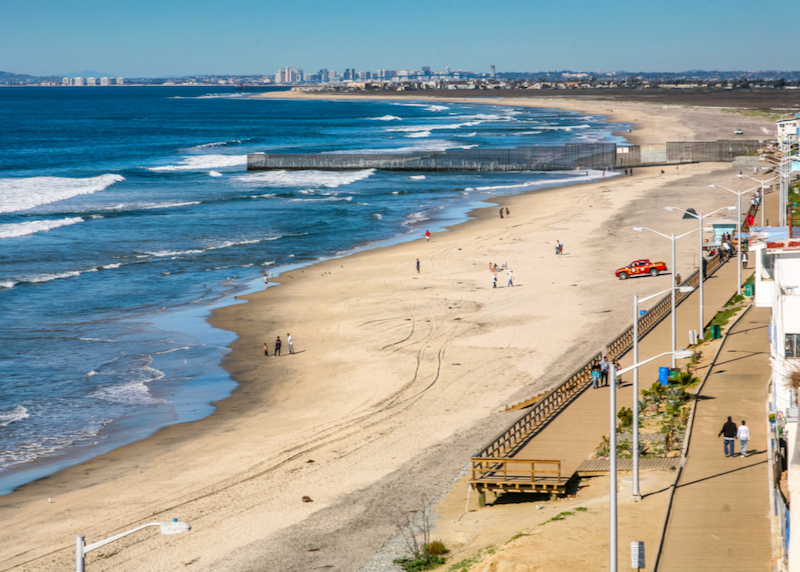
The border fence goes directly into the ocean, with the San Diego skyline visible in the distance.
How do I get to Tijuana?
Tijuana Airport serves almost every major city in Mexico, though it currently hosts no international flights. From Tijuana airport, taxis charge around 250 pesos into the city – Uber drivers will charge less but are usually reluctant to pick-up (see below).
San Diego Airport is just 34km and a short taxi ride (around US$60 on the meter) from the US-Mexican border at Tijuana, making San Diego the main entry point for visitors from the US, Canada, and Europe.
Can I walk or drive across the US-Mexico border?
It’s possible to walk or drive across the US-Mexico border in Tijuana, but we recommend walking across rather than driving (see below). Walk across the US-Mexico border at San Ysidro (“PedEast”), which is conveniently connected to the San Diego Trolley system (45 minutes and just US$2.50 from downtown San Diego), making day-trips possible. Leaving the US side there is no US immigration/customs check and relatively swift Mexican checks for pedestrians – there is no paperwork if going no further than Tijuana or Ensenada. Once across take a taxi (always waiting; should be US$5–6) or a 20-minute walk to Avenida Revolución, the main drag; it’s a well-signposted route via the footbridge over the Tijuana River. It’s safe during the day, but take a taxi at night. Allow more time heading back into the US, especially during morning and evening rush hours, when the wait can take several hours (there are always stringent immigration and customs checks re-entering the US, even for US citizens). The main border crossings are open 24 hours. Don’t forget a passport!
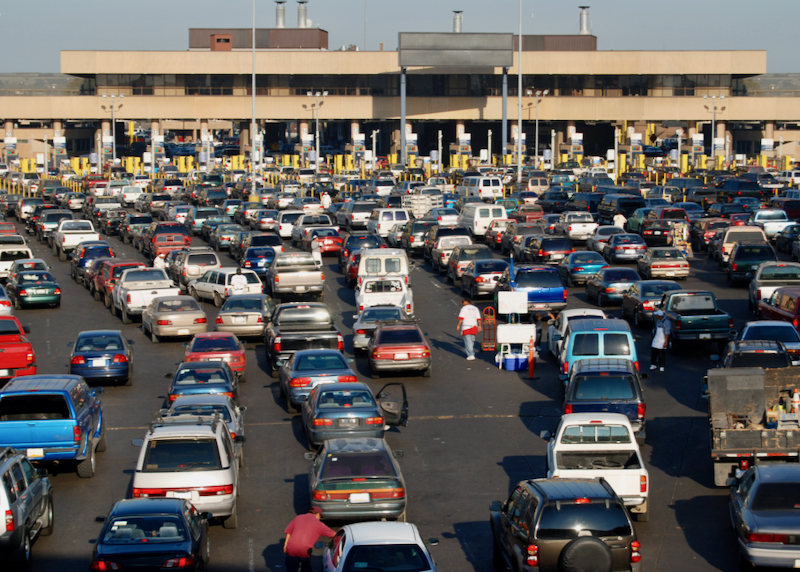
The San Ysidro border crossing station between Tijuana, Mexico and San Diego, United States is one of the busiest in the world.
Can I use Uber in Tijuana?
Uber does operate in Tijuana (assuming phones have roaming, and the app works), but drivers are usually reluctant to pick-up from Tijuana Airport due to hostility from the airport taxi union. However, an Uber can be taken back to the airport. Once in the city, getting an Uber should be no problem, and can be cheaper than regular taxis.
Can I take Uber across the US-Mexico border?
It’s generally not possible to take an Uber all the way from the US side to the Mexico side, though some drivers may agree to make the trip (it’s definitely not permitted to take an Uber from Tijuana to the US side). Instead, just take an Uber to the border, walk across, and order another one on the other side. Heading to the more central “Zona Río” section of Tijuana, it can be much faster (but not cheaper) to take an Uber to the pedestrian sky bridge dubbed Cross-Border Xpress or “CBX” that crosses the US-Mexico border at Tijuana Airport. Walk across (it costs US$16) and then order an Uber on the other side outside the passenger terminal – crossing here is much faster than at San Ysidro.
Can I drive to Tijuana?
It’s possible to drive to Tijuana, but it’s not recommended if only going to Tijuana. Driving across the border (and especially back into the US) can take several hours thanks to comprehensive customs checks, and once in Tijuana the roads can be congested and confusing to navigate. Try leaving the car at Border Station Parking, 4570 Camino de la Plaza (Mon–Thurs US$9 per 10 hours; Fri–Sun US$18 per 10 hours) in San Ysidro, and just walk across the border.
Tijuana is just 20 miles (32 km) south of central San Diego, 130 miles south of Los Angeles, 360 miles west of Phoenix, Arizona, and 500 miles south of San Francisco.

Pedestrians walking near Plaza Santa Cecilia, a historic Mexican square in the heart of the city.
Do I need a car in Tijuana?
It’s relatively easy and cheap to get around Tijuana by bus or taxi so a car is not necessary. It can be useful to have a vehicle to explore the coastline beyond the city – to Rosario and Ensenada for example – but these are also well-served by bus. Driving rental cars is not a great idea as these are sometimes targeted by thieves, and getting into even a minor road accident can result in protracted encounters with non-English speaking police.
How do I get around Tijuana without a vehicle?
It’s easy to explore the Zona Centro in Tijuana on foot, but to go any further (to the Zona Río, for example), take taxis or buses – buses are cheap but taxis are much more convenient in Tijuana, and much safer at night. Yellow taxis (“taxi económico”) don’t use meters and follow a fixed-rate fare system, while “taxis libres” (white color) use meters – to be avoid being overcharged, try to use taxi libres (always insist drivers turn on the meter). Fares within central Tijuana shouldn’t be more than 100 pesos. Uber charges slightly cheaper rates. Shared taxis (“colectivos” or “taxi de ruta”) are even cheaper, but not recommended for first-time visitors (or non-Spanish speakers).
When is the best time to go to Tijuana?
The summer months (June to October) are warm and dry, and are generally the best times to visit, though as a big city Tijuana is essentially an all-year destination. Winter is usually cooler, slightly wetter, and cloudier. It’s best to avoid Christmas and Easter when locals and domestic tourists fill the streets.
Where should I stay in Tijuana?
First-timers to Tijuana should aim for the “Zona Centro” anchored by Avenida Revolución, the main tourist drag. The city’s modern downtown, known as the Zona Río, has less character and less choice when it comes to hotels. The motels on the outskirts are only an option if driving a car. We recommend the centrally located Hotel Ticuán and Alou Hotel Boutique, or the Lucerna if preference is for the Zona Río.
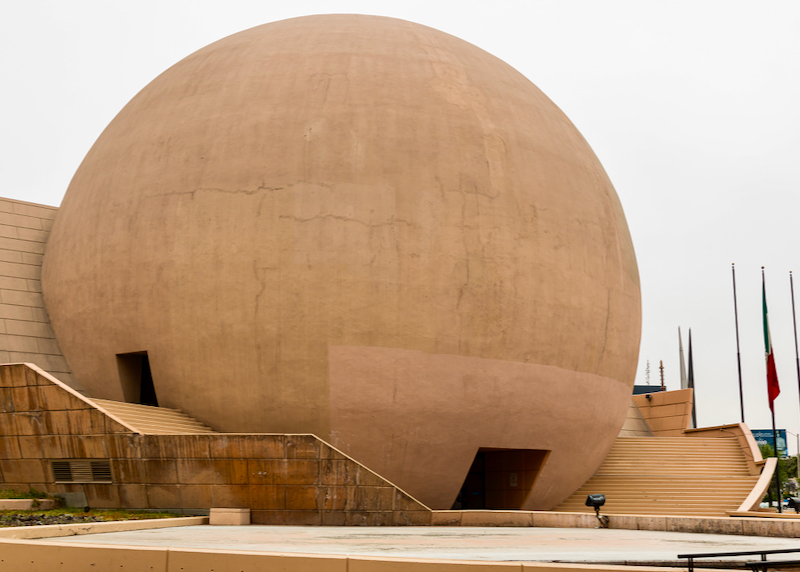
The iconic dome of the Centro Cultural Tijuana which features art, an IMAX theater, a botanical garden, and an aquarium.
What are the best things to do in Tijuana?
The heart of Tijuana is Avenida Revolución, aka La Revo, the celebrated main tourist street. It’s lined with bars, restaurants, and souvenir shops. Stroll the busiest stretch from the Monumental Arch at Plaza Santa Cecilia south for eight blocks or so to take in the scene, including Tijuana’s “famous” donkeys – painted to look like zebras. Here also is Caesar’s, where Caesar Cardini supposedly invented Caesar salad in 1924 (still prepared tableside).
A few kilometers to the east, the Zona Río is home to gourmet restaurants, clubs, and modern buildings, as well as the city’s colorful traditional market, Mercado Hidalgo. Also here is the Centro Cultural Tijuana (CECUT), housing theaters, art exhibitions, and an IMAX movie theater known as “La Bola”. It also contains the Museo de las Californias, a museum that charts the history of Baja California. Guided tours are a great way to learn about the city for first-time visitors – we recommend Tijuana Walking Tour, especially the taco tours. Locally-operated Turista Libre is another favorite.
What are the restaurants like in Tijuana?
The restaurants in Tijuana are extremely varied, ranging from classic Mexican street food to some of the best gourmet restaurants in the country. Tijuana is famed nationally for its taco stalls; “Tacos Las 24 Hours”, a tiny no-frills (and unmarked) stand at Niños Héroes 588; Tacos Salceados (Ermita Nte 30-A), which knocks out the best carne asada (grilled steak) tacos in the city; and sit down restaurant Tacos El Franc (Gral Rodolfo Sánchez Taboada 9257).
Over in the Zona Río is the highly acclaimed food court Telefonica Gastro Park, as well as posh Mexican restaurants such as La Diferencia, Chef Miguel Guerrero’s La Querencía, and Misión 19, celebrity chef Javier Plascencia’s showcase for “Baja Med” cuisine (Mexican-Mediterranean fusion).
What is the nightlife like in Tijuana?
Avenida Revolución is the traditional hub of Tijuana’s legendary nightlife, with “La Sexta” (Calle 6, just off Revolución, aka Flores Magón) home to hip jukebox bar El Dandy Del Sur (no. 2030) and mescal specialist La Mezcalera (no. 8267). A few minutes’ south of La Revo by taxi lies Cervecería Tijuana (Fundadores 2951), one of the city’s acclaimed microbreweries with an excellent on-site tap house. Tijuana has experienced a boom in craft brewing in the last two decades, with Plaza Fiesta (a collection of bars and restaurants conveniently located in the same open mall) at Paseo de los Héroes 1001 in the Zona Río a good place to start for aficionados.
Look out also for Cervecería Insurgente, which has taproom on Revolución (no. 933), and nearby Mamut Brewery, around the corner at Carrillo Puerto y o Tercera 8161. Highly-recommended Norte Brewing is at Salvador Díaz Mirón 8178, also off Revolución.
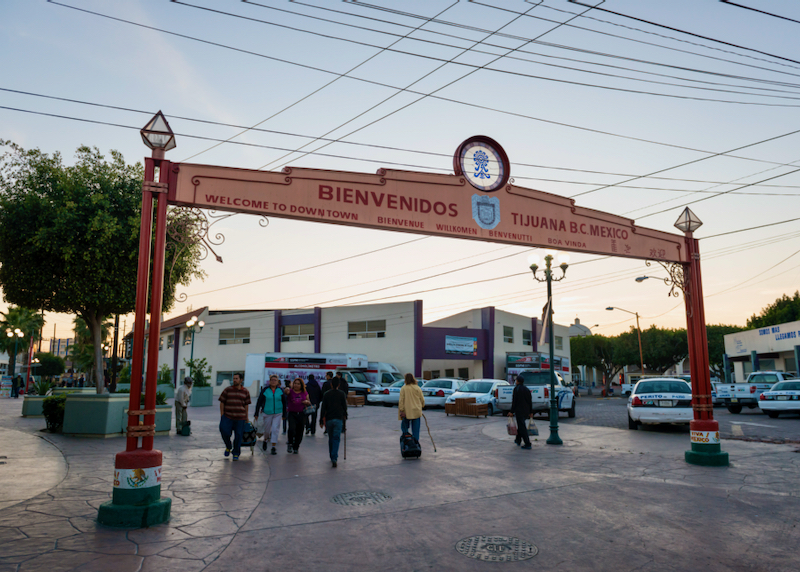
Welcome to Downtown Tijuana.
What currency is used in Tijuana?
The Mexican peso (often prefixed with a “$” sign) is the currency of Mexico and Tijuana – though most places will accept US dollars a better rate of exchange (and therefore cheaper deals) are in pesos. Most major shops and restaurants in Tijuana accept credit cards, but it is a good idea to have some peso cash on hand for entry fees and small purchases like bottled water and snacks. ATMs are easy to find in Tijuana, on and just off Revolución (especially Av Constitución, running parallel one block west).
Is Tijuana expensive?
It’s easy to visit Tijuana on a modest budget. Unless it’s a public holiday, hotels are relatively good value, museums are free or charge nominal fees, and most restaurants are cheap – a filling meal of street tacos costs just a handful of dollars.
Is Tijuana safe?
Tijuana is safe for tourists – Revolución and the Zona Río are well policed night and day. Tijuana is a big city, and does suffer from crime, some of it drug-related – take the usual precautions, especially at night (get hotels and restaurants to order taxis), and keep valuables in room safes.
Read More
- Cancun – Best Hotels
- Cancun – Family Hotels
- Isla Mujeres – Best Hotels
- Isla Mujeres – Family Hotels
- Los Cabos – Travel Guide
- Los Cabos – Best Hotels
- Los Cabos – Family Hotels
- Mazatlan – Best Hotels
- Mazatlan – Family Hotels
- Playa del Carmen – Best Hotels
- Playa del Carmen – Family Hotels
- Puerto Vallarta – Best Hotels
- Puerto Vallarta – Family Hotels
- Punta de Mita – Best Hotels
- Sayulita – Best Hotels
- Tulum – Best Hotels
- Tulum – Family Hotels